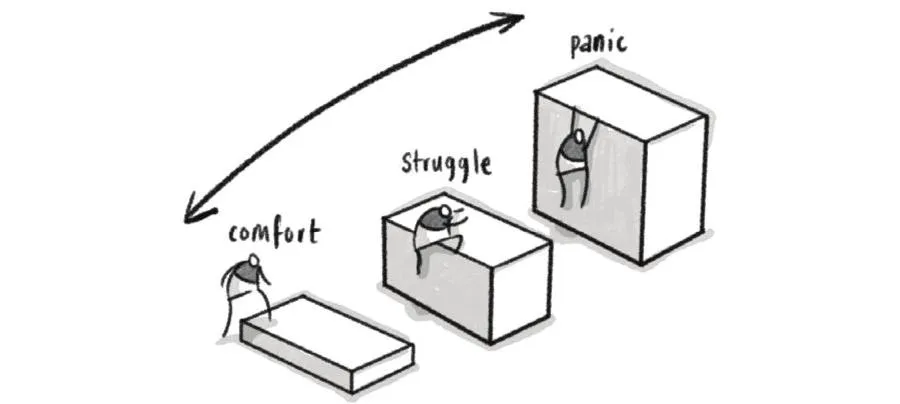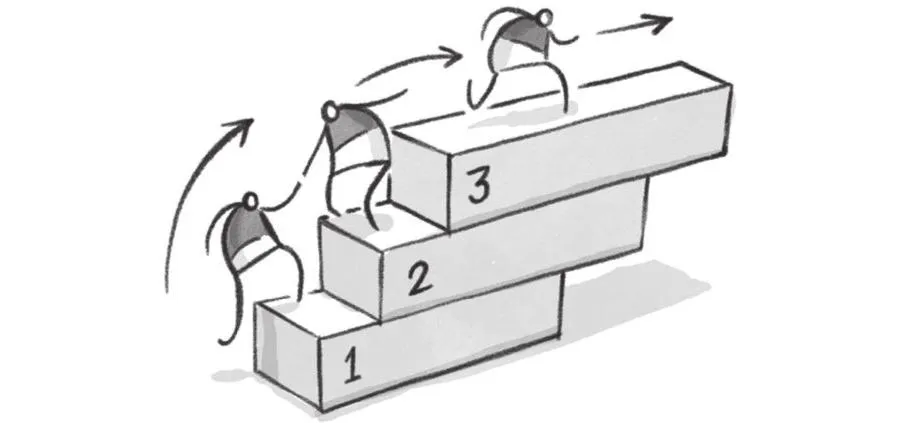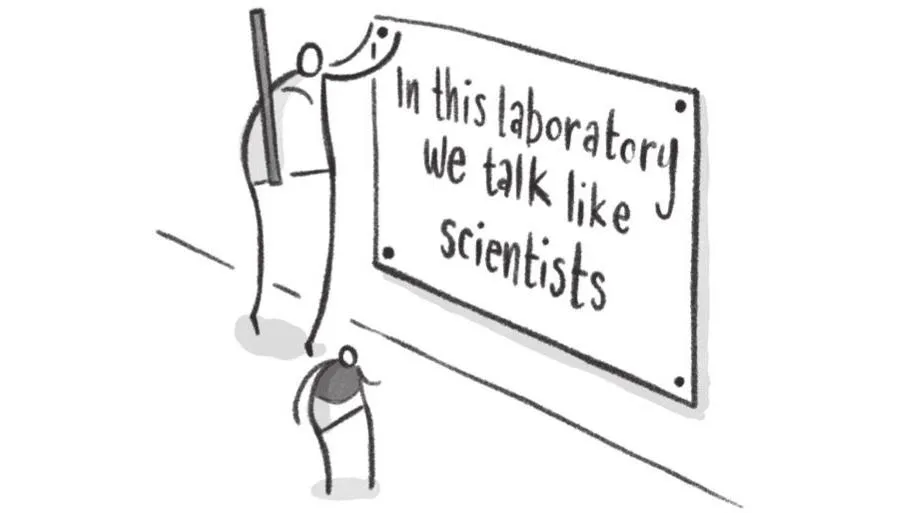Challenge can be described as the provision of difficult work that causes students to think deeply and engage in healthy struggle. This can be problematic for all teachers but there are particular issues that make this especially difficult for science teachers. During any one lesson, science teachers will have up to thirty students in their laboratory, all of whom will have different prior knowledge of scientific ideas, different levels of understanding of the scientific ideas being explored and different scientific misconceptions. Alongside this, their level of interest in the subject will also vary widely, ranging from the super-keen science fanatic, who has always been fascinated by dinosaurs, the solar system and exciting chemical reactions, to the surly teenager who appears to have a complete aversion to the subject. It is our job to synthesise all of this information and then push each student just enough to keep them in the struggle zone.
Challenge is slightly different from the other five principles. While there are specific teaching strategies that can be employed to ensure that challenge is appropriate for all the students we teach, the principle is more about an approach to teaching. Challenge is a long-term venture and should run through everything we do as science teachers – like the lettering that runs through a stick of rock. It’s about the culture that we create in our science laboratories and the expectations that we have of the students we teach. The objective is always to try to keep students in the struggle zone, as shown in the previous diagram. This requires students to be thinking hard enough to support learning, but not so much that they reach cognitive overload and slip into the panic zone, where learning will be limited. Similarly, the work should not be easy, resulting in students remaining in the comfort zone.
The best science teachers create this culture by getting to know the students they teach, taking a genuine interest in their progress, making them believe that they can achieve beyond their own expectations and then supporting them – through the other five principles – to meet these expectations. Their science laboratories are places of interest, warmth and safe challenge where students feel secure enough to push and challenge their own thinking.
So, let’s explore some strategies that we can put in place to start growing this culture.
Challenge Strategies
1. Curriculum first
Our starting point as secondary science teachers should be a challenging and interesting curriculum. We should scale up our Key Stage 3 curriculum to ensure that students are being exposed to challenging material – for example, rather than simply teaching students about particles in Year 7, why not teach them about subatomic particles and the arrangement of electrons in shells? Provided that we scaffold their learning carefully, most students will rise to the challenge and enjoy being exposed to these difficult ideas.
When asked to describe what he had been learning about in science, Jude, a Year 7 student at Durrington High School, responded:
We had a great science lesson today. Mr Canavan was telling us about subatomic particles. Electrons move around the outside of the atom in shells – shells are like lanes on a running track – the first shell holds two electrons, but then the others hold eight. They orbit the nucleus, which contains protons and neutrons. Protons have a positive charge and neutrons have a neutral charge. The electrons have a negative charge.
This student response, while perhaps not perfect, simply wouldn’t have been possible if the science department at the school hadn’t reviewed their Key Stage 3 curriculum and scaled up the content. The important point is that the students are being exposed to more demanding ideas. The challenge is then to do the same at GCSE level in Key Stage 4. By exposing students to material that is just beyond the expected level of the GCSE specification, the hardest content they will be exposed to will make the hardest content they have to remember for the exam seem easier by comparison.
2. Talk like a scientist
When thinking about vocabulary, we should consider the three different levels of words, as outlined by Dr Isabel Beck:
Language has important implications for science teachers. First, we need to explicitly teach the subtle differences in meaning of a tier 2 word in a science context compared to its use elsewhere. For instance, the students’ experience of ‘variable’ would mean that something is or has been changing (e.g. “The weather has been highly variable this week”). In science, however, it has a more specific meaning. It is a factor in a science experiment that could change, but we either choose to keep the same measure or change it. Second, we need to expose them to tier 3 scientific vocabulary on a regular basis and repetitively. So rather than dumbing down our language (e.g. “The oil became more runny when it was heated”), we need to expose students to and teach them the correct meaning and use of scientific vocabulary (e.g. “As the oil was heated it had a lower viscosity, and so moved down the tile at a faster speed”). Having taught them tier 3 language, we then need to insist that they use it. Senior leader and education consultant Chris Moyse does this brilliantly by providing this poster for science teachers to put up on the walls of their laboratories:
3. Surface then deep
John Hattie refers to the skill which means expert teachers know when to advance from surface learning to deep learning. Surface learning is about knowing the key facts, whereas deep learning is about knowing how to relate, link and extend this knowledge. A common mistake that science teachers make is moving on to the deep learning before students have mastered the surface learning – the key knowledge that they need to master that topic. For example, before students can understand the idea of ionic bonding or covalent bonding (deep learning) they need to have a good understanding of atomic structure (surface le...




